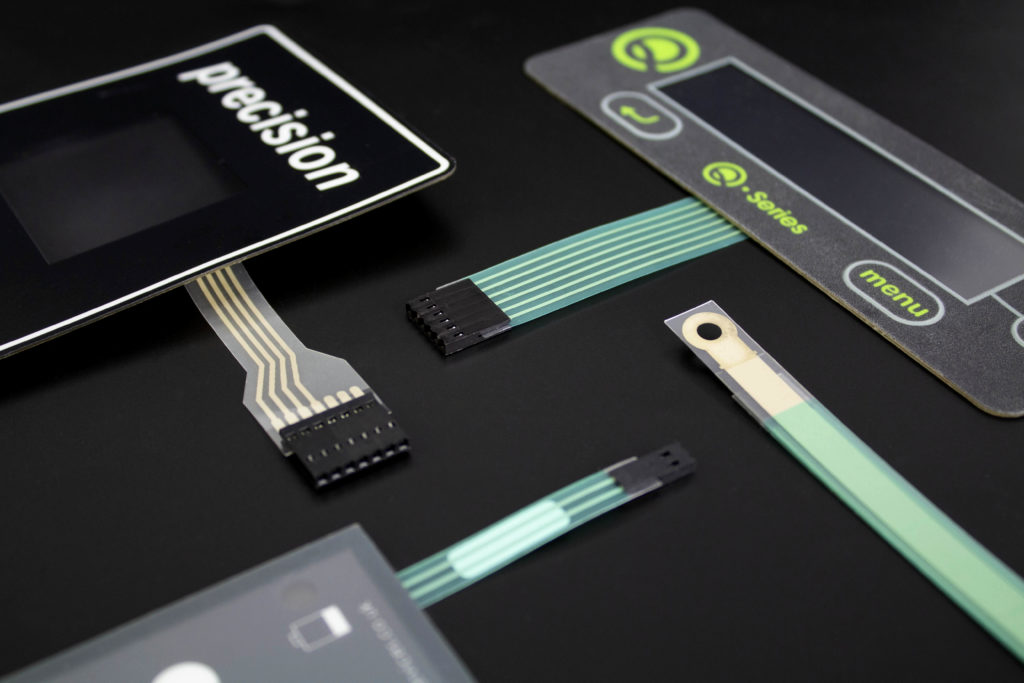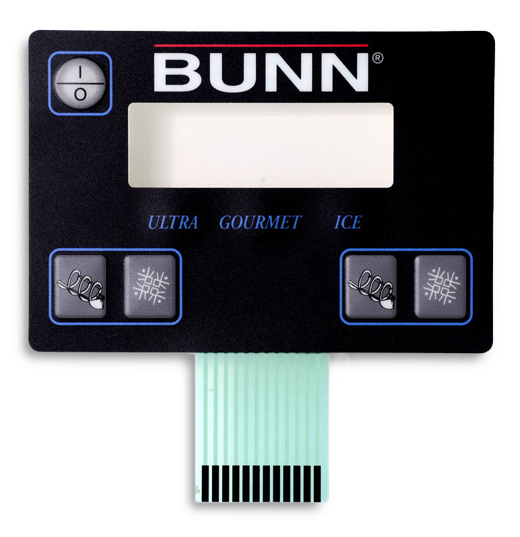Why Membrane Switches Are Gaining Popularity in the Automotive Industry
Why Membrane Switches Are Gaining Popularity in the Automotive Industry
Blog Article
Recognizing the Significance of Membrane Switches in Interface
Membrane buttons are integral parts in the design of efficient interface, facilitating not only functionality yet also boosting visual allure and user communication. Their one-of-a-kind attributes, such as resistance to ecological aspects and customizable designs, make them ideal for a varied array of applications across numerous industries. As we check out the various advantages and future patterns connected with Membrane innovation, it ends up being clear that these buttons are greater than just elements; they stand for a merging of advancement and usefulness. The implications of this technology on individual experience are worth taking a look at even more.
What Are Membrane Buttons?

The spacer layer, which includes adhesive homes, enables the separation of the circuit layer from the overlay, making sure that the switch stays in a non-activated state till pushed. When stress is put on the overlay, it presses the spacer layer, connecting the space and finishing the circuit in the underlying layer. This design not just decreases the physical area required for standard mechanical buttons but additionally improves the longevity of the device, as Membrane buttons are normally immune to dust, moisture, and other environmental aspects.
Generally located in applications ranging from consumer electronics to medical devices, Membrane switches are indispensable to modern technology, supplying a effective and user-friendly interface that aligns with modern design requirements.
Advantages of Membrane Switches
While countless switch modern technologies exist, Membrane Switches offer unique benefits that make them particularly desirable in various applications. Among the primary advantages of Membrane buttons is their compact layout, which allows for space-saving executions in gadgets where genuine estate is limited. Their thin account not just improves aesthetic appeal but also assists in light-weight construction.
One more substantial benefit is their resistance to environmental elements. Membrane switches are typically secured versus wetness, dirt, and contaminants, making them ideal for usage popular environments, such as clinical tools and industrial tools. This longevity extends the life expectancy of the button, lowering maintenance prices and improving integrity.
Moreover, Membrane switches can be tailored to meet details design demands, integrating special graphics and colors that improve user interaction. Their tactile responses options can additionally be tailored to provide a satisfying customer experience. In addition, Membrane buttons are affordable, especially in high-volume applications, as they can be created efficiently.
Applications in Different Industries

In the customer electronics industry, Membrane buttons prevail in devices moved here such as microwaves, washing devices, and push-button controls. Their tactile comments and aesthetic choices enhance user experience while giving a streamlined, modern appearance. Furthermore, automotive producers utilize Membrane buttons in control panel controls and infotainment systems, where room is limited, and user involvement is essential.
Moreover, the industrial market leverages Membrane buttons in control panels for equipment and equipment, enabling for user-friendly operation in frequently extreme atmospheres. Their resistance to chemicals and wetness ensures longevity and integrity in these applications. On the whole, the flexibility of Membrane Switches contributes dramatically to their widespread usage, making them vital in different technical domain names.
Design Considerations for Membrane Switches

When developing Membrane buttons, several crucial factors to consider useful source have to be taken into account to make sure optimal functionality and customer experience. Firstly, the option of products is crucial; picking durable, high-grade substratums can boost the button's long life and resistance to environmental factors such as moisture and temperature changes.
Secondly, the style of the visuals overlay ought to prioritize clearness and simplicity of usage. Symbols and message have to be legible, and the layout ought to assist in user-friendly interaction (membrane switches). Additionally, responsive responses is important; incorporating a responsive dome or various other mechanisms can improve the user experience by offering physical verification of activation
One more essential aspect is the button's electric efficiency. Designers have to make sure that the conductive traces are effectively made to reduce resistance and stay clear of signal disturbance. This involves assessing the required actuation pressure and ensuring compatibility with the digital components they will certainly interface with.

Future Trends in Membrane Modern Technology
As innovation proceeds to advancement, Membrane switches are poised to progress substantially, driven by technologies in materials and producing techniques. One emerging trend is the incorporation of innovative materials, such as adaptable substratums and conductive inks, which boost longevity and lower the overall weight of Membrane buttons. These materials not only enhance the responsive action however also enable for the layout of buttons that can withstand harsher environmental conditions.
Furthermore, the assimilation of touch-sensitive technologies is changing standard Membrane Switches into more interactive individual interfaces. Capacitive touch sensors installed within Membrane button panels can give a more intuitive and responsive customer experience, lining up with the expanding need for smooth, modern-day designs in consumer electronics.
Furthermore, improvements in printing strategies, such as digital and 3D printing, enable rapid prototyping and personalization of Membrane buttons. This flexibility enables producers to react faster to market needs and consumer choices.
Last but not least, sustainability is ending up being a substantial emphasis, with suppliers checking out green products and processes. As these patterns unfold, the future of Membrane technology promises improved functionality, aesthetic appeal, and ecological duty, solidifying their role in advanced interface throughout numerous sectors.
Verdict
In verdict, Membrane Switches represent an important part in the layout of individual interfaces, combining performance with visual flexibility. As advancements in modern technology proceed, the development of Membrane buttons is expected to additional fine-tune individual interfaces, driving technology and enhancing use in a progressively complicated technical landscape.
Membrane buttons are integral components in the style of efficient customer interfaces, assisting in not just functionality but also improving aesthetic appeal and customer interaction.Membrane Switches serve as you could try here a crucial element in numerous customer interfaces, promoting a seamless communication in between users and electronic devices.While many switch modern technologies exist, Membrane Switches offer distinctive advantages that make them particularly desirable in various applications.Additionally, Membrane switches can be personalized to fulfill details design needs, integrating one-of-a-kind graphics and colors that improve customer interaction.In conclusion, Membrane Switches represent an important element in the layout of customer interfaces, combining performance with visual adaptability.
Report this page